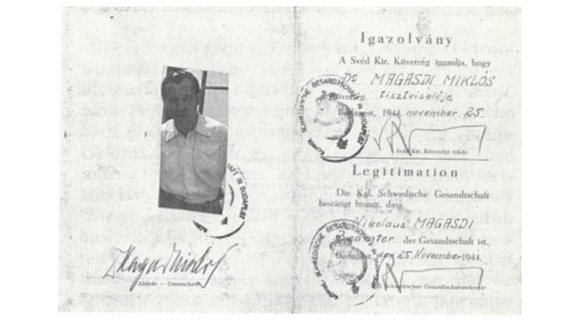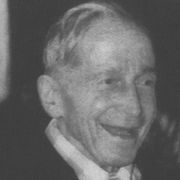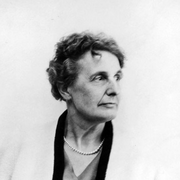Righteous Among the Nations - Raoul Wallenberg
“I want to save a nation”.
Raoul Wallenberg
Raoul Gustaf Wallenberg was born in Kapptsta, near Stockholm, Sweden on August 4th, 1912.[1] His extended family included several generations of bankers, diplomats, and politicians. And so, Raoul Wallenberg, too, was supposed to become a banker by the family tradition.[2] However, he had other plans. After finishing his military service in 1931, he moved to the United States to fulfill his dream and learn architecture at the University of Michigan. After three and a half years he graduated with honors and even won a medal for his remarkable achievements.[3]
After receiving his diploma in architecture and science in 1935, Wallenberg returned to Sweden.[4] As time went by and he couldn’t find a job in the architecture field in Sweden, his grandfather found him a job at one of the family’s bank, in the Holland Bank in Haifa.[5] [6] So, Wallenberg moved to Palestine, and there, he met for the first-time members of the Jewish community, including those who escaped the Nazi regime. He heard their stories and learned about the cruelty and abuse that the Nazis inflicted on the Jewish people.[7]
In 1936, Wallenberg returned to Sweden.[8] In 1944 he was appointed the first secretary for the Swedish Legation office in Budapest.[9] From the population of 725,000 Jewish people, more than 430,000 were expelled from Hungary mainly to Auschwitz.[10] By mid-1944, the only place in Hungary where Jews were still present was Budapest.[11]
Wallenberg’s first mission at the Swedish Legation office was to create false identification certificates which would allow Jews to pass through the Swedish border and escape Nazi prosecution. These false certificates carried the colors of the Swedish flag and all the proper signatures. Under international law, they were not valid, but they worked. Ultimately, he managed to issue about 4,500 certificates and recruited 700 Jews who helped him in the process.[12]

Identification papers, created and signed by Raul Wallenberg
Later on, Wallenberg continued to use his influence in the Legation office and came up with the concept of “Swedish houses”. He decided that 30 houses in Budapest would be declared as refugee centers and they become shelters for more than 15,000 Jews. These houses were defined as Swedish territory, and a Swedish flag was raised above them.[13] On one dramatic occasion, Nazi officers tried to enter one of the Swedish houses, but Wallenberg personally stopped them saying it was Swedish property, and if they wanted to arrest the Jews inside, they would have to shoot him first.[14] The Nazi officers left the property without hurting any of the inhabitants.[15]
Wallenberg did everything he could to save as many people as possible. When he learned that Jews were crammed in trains, awaiting deportation, he provided them with false identification certificates so that they could escape.[16] He gathered Jews with Aryan appearances and disguised them as Nazis by providing them with Nazi uniforms to help smuggle other Jews.[17] When he learned about the Nazi death marches, he and his allies supplied the marchers with food rations, clothing, and medication.[18]
In 1945, Wallenberg found out about Eichmann’s plan to eliminate the largest ghetto in Budapest. Wallenberg learned that the only one who could stop the massacre was the commander in chief of the German troops posted in Hungary, General August Schmidthuber. He sent a letter, through his ally Pa’l Szalay where he warned Schmidthuber that if he carried out the terrible plan, he would be held accountable as a war criminal, and be executed after the war. After the commander got Wallenberg’s letter, he abandoned the plan to destroy the ghetto. Two days later, the Russian troops arrived and found more than 97,000 Jewish inhabitants in the ghettos of Budapest.[19]
On January 17th, 1945, Wallenberg left Budapest for a mission that wasn’t supposed to take more than eight days, accompanied by Soviet soldiers. He was joined by his close friend Dr. Ernö Petö, who later recalled that Wallenberg had said he was unsure whether the soldiers were there to protect him or to arrest him. Dr. Petö was the last one who saw Wallenberg as a free man. The Soviet Ministry of Defense issued a secret arrest warrant for Raoul Wallenberg, which was arrested by the Soviets on January 19th, 1945.[20]

The last known picture of Raul in Budapest, 1945
After his disappearance, the soviets claimed they had never heard about Raoul Wallenberg. However, in 1956, they admitted that he died in prison in 1947. After the war, memorials were built in his honor, streets in Israel were called after him, and many movies, books, and documents were published about his bravery.[21]
In November 1963, Raoul Wallenberg was declared a “Righteous Among the Nations” by the “Yad Vashem” institute.[22]
[1] Darryl Lyman, Holocaust Rescuers: Ten Stories of Courage (Enslow, 1999) p. 103.
[2] Raymond Jennings, Holocaust Saviors: True Stories of Rescuers That Save Holocaust Refugees. 2nd edition (Publisher not identified, 2015) p. 39.
[4] Ibid, p. 40.
[6] https://collections.ushmm.org/search/catalog/pa10444 (Last seen: 21.11.22)
[7] Ibid, p. 40.
[10]Gutman, Wigoder, Gutman, Israel, & Wigoder, Geoffrey. (1990). Encyclopedia of the Holocaust. Macmillan
[11] Ibid, p. 44.
[14] Lyman, p. 113.
[18] Ibid, p. 112.
[20] William Korey, The Wallenberg Mystery: Fifty-Five Years Later (American Jewish Committee, 2000) p.6-7.





